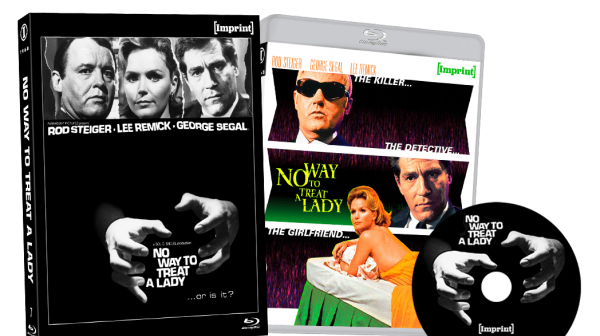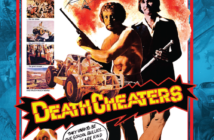No Way To Treat A Lady begins with a jaunty Irish priest whistling happily to himself as he walks down a New York street. He visits with a lapsed widow before inexplicably beginning to tickle her to the point of hysteria. Then he strangles her. Roll credits.
It’s a peculiar beginning to a peculiar film. A 1968 comedy thriller from director Jack Smight (Harper/ Airport 1975), there’s something almost naïve about No Way To Treat A Lady. The sheer incongruity of its ingredients is actually quite endearing (and a little overwhelming). Think about it for a second: a romantic thriller comedy about a serial killer who dresses up in elaborate disguises to murder widows and then taunts the lead detective over the phone. It should be a mess, yet No Way To Treat A Lady effortlessly shifts gears, even within a single scene and somehow it all makes sense. It’s quite marvellously absurd.
Rod Steiger, a year after winning an Oscar for In The Heat of The Night plays the killer, clearly relishing the opportunity to ham it up in his various disguises and accents, whilst George Segal (Who’s Afraid of Virginia Wolf) plays the counterpoint, the awkward hapless detective Moe Brummel. Segal’s role in particular is quite interesting. In a film brimming with mother issues, he lives with his, enduring endless comparisons with his doctor brother. Hardly the super cop, he doesn’t seem to have much of an idea how to solve the case and looks quite out of his depth when the killer calls. Lee Remick (The Omen) is woefully under utilised as Segal’s love interest, the former swinger who inexplicably falls for Brummel. The cast is rounded out by a bunch of great New York character actors including Doris Roberts who would go on to play the mother in Everybody Loves Raymond some 28 years later.
The film has developed something of a cult following over the years primarily due to Steiger’s over the top personas, from the ridiculously camp hairdresser, to a gruff New York cop, to a Bavarian plumber. No Way To Treat A Lady’s marriage of ridiculous theatricality, the grim seediness of the murders, the earnestness of the love story and keen eye for absurd humour is unsurpassed. You could never get away with this today. Particularly some of the totally inexplicable moments, such as when a midget wanders into the precinct and hopefully confesses to the murders. It’s played for laughs, with Brummel making him imitate WC Fields to rule him out as the killer. Then there’s the use of a female impersonator as one of the victims. It’s not a plot point, it’s not even mentioned in the film at all. Strange. In a way its refreshing, yet in 1968 it’s just odd.
No Way To Treat A Lady comes from a book by William Goldman, who didn’t write the screenplay, though later scripted the likes of All the Presidents Men and Butch Cassidy and The Sundance Kid for which he won Oscars. Film historian Kate Ellinger, who provides a feature commentary notes some quite significant deviations from Goldman’s book, making you realise the novel was significantly more grim, yet similarly absurd, inspired in part by the Boston Strangler. The source material is clearly a large part of why No Way To Treat A Lady is so strange, and such a fascinating experience some 52 years later, yet the performances take it to a whole new level. You might be confused or bemused, even periodically amused, but you wont be disappointed.




